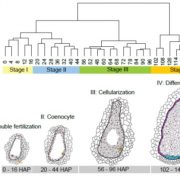
High-temporal-resolution transcriptome landscape of early maize seed development (Plant Cell)
Plant Science Research WeeklySeeds determine the yield and quality of the plants. In maize, seed development initiates from a double fertilization event where one pollen sperm fuses with the egg and the other with the central cell of female gametophyte to produce the progenitors of embryo and endosperm, respectively. The embryo…
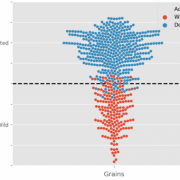
3D characteristics of grain reveal differences between domesticated and wild relatives in wheat and barley (Plant J)
Plant Science Research WeeklyGrain related traits play key roles in determining the total grain yield. However, traditionally manual measurement can not investigate grain seed from multiple angles. To visualize a 3D structure of grain, X-ray based images were captured for a single spike/grain from multiple angles. Because of strong…
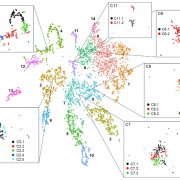
Single-cell RNA sequencing reveals developmental trajectories of Arabidopsis root cells
Plant Science Research WeeklyNew advances in sequencing technologies have made possible the understanding of the dynamics of developmental processes in an unprecedented manner. In a recent study, Denyer, Ma, et al. profiled nearly 5,000 cells from Arabidopsis roots using single-cell RNA sequencing technology. Gene expression profiles…
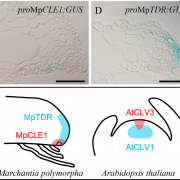
Control of proliferation in the haploid meristem by CLE peptide signaling in Marchantia polymorpha (PLOS Genetics)
Plant Science Research WeeklyThe peptide/hormones CLE (CLAVATA3/EMBRYO SURROUNDING REGION-related) and their receptors are a fascinating cell signal system that regulates meristems activity in angiosperms and is crucial for the establishment of 3D forms. How this system works in bryophytes is very relevant to understand its evolution…

Plant Science Research Weekly: April 5th
WWR Full PostPlant Physiology Focus issue on biotic stress
The April 2019 issue of Plant Physiology includes a set of papers addressing biotic interactions between plant and pathogens or pests. As the editors indicate, progress on this topic has been rapid and significant. Key topics explored in reviews and research…
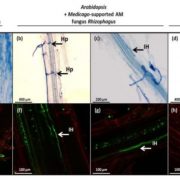
Antagonistic responses to ‘symbiotic’ AM fungi in the non-host Arabidopsis thaliana ($) (New Phytol)
Plant Science Research WeeklyA strikingly vast array of phylogenetically distant plants are able to form intimate interactions with symbiotic arbuscular mycorrhizal (AM) fungi for the mutually beneficial exchange of nutrients. Several years of intensive research have revealed the complex regulatory networks and genetic ‘toolkits’…
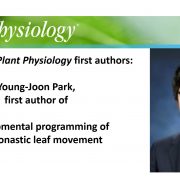
Recognizing Plant Physiology first authors: Young-Joon Park
Plant Physiology, Plant Physiology: Author ProfilesYoung-Joon Park, first author of Developmental Programming of Thermonastic Leaf Movement
Current Position: Ph.D. candidate, Molecular Signaling Laboratory, Department of Chemistry, Seoul National University, South Korea
Education: Ph.D. candidate, Molecular Signaling Laboratory, Department of Chemistry,…
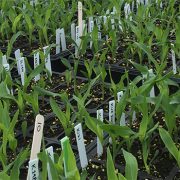
Metabolite to Gene: A High-Resolution Resource for Maize
Research, The Plant Cell, The Plant Cell: In a NutshellZhou et al. provide a resource for structural and functional assignment of the many unknown maize metabolites. Plant Cell https://doi.org/10.1105/tpc.18.00772
Background: Plants defend themselves against herbivores and pathogens by producing a myriad of specialized metabolites. This physiological…
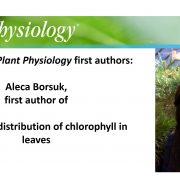
Recognizing Plant Physiology first authors: Aleca Borsuk
Plant Physiology, Plant Physiology: Author ProfilesAleca Borsuk, first author of The spatial distribution of chlorophyll in leaves
Current Position: Master of Environmental Science Candidate, Yale School of Forestry & Environmental Studies
Education: Bachelor of Science in Mechanical Engineering with a Minor in Botany (University of Hawaii…

